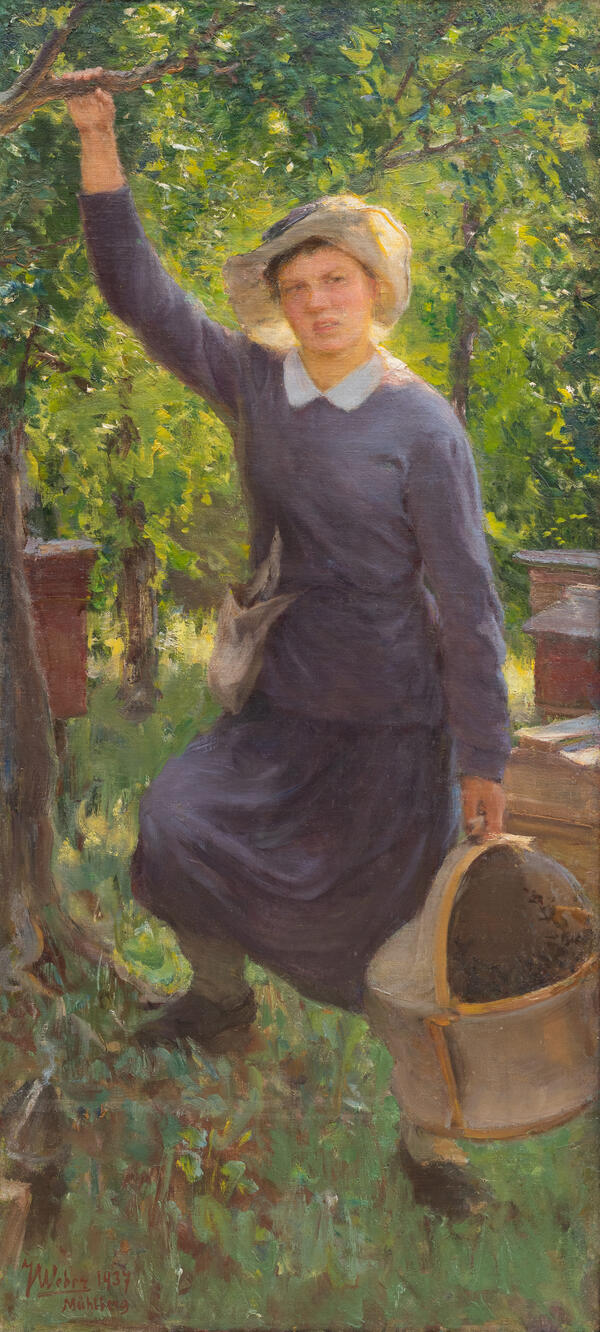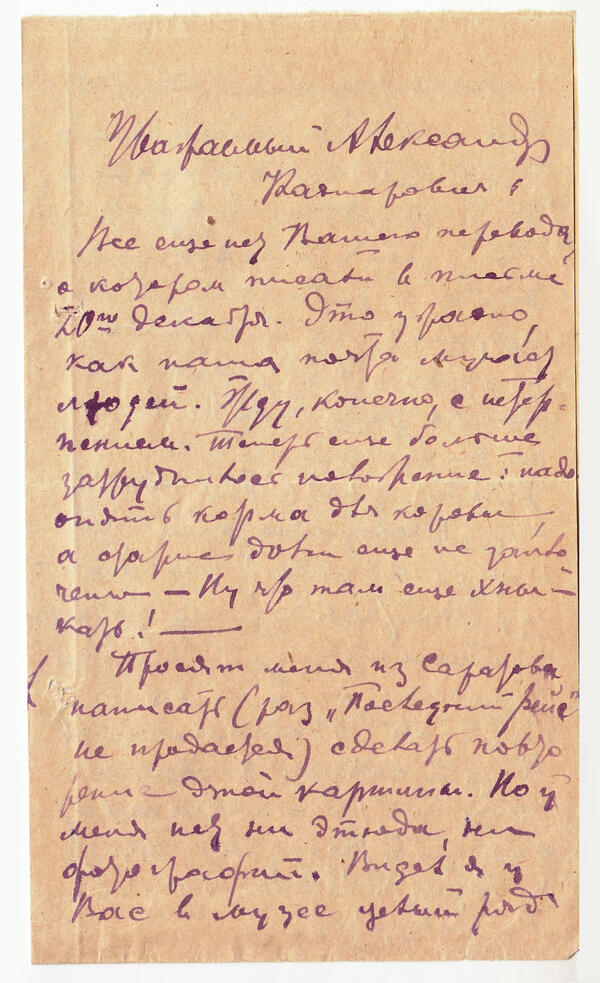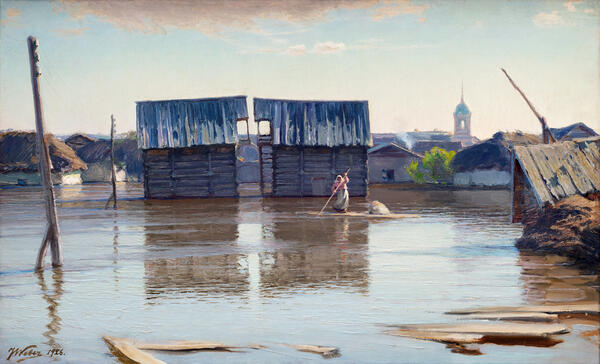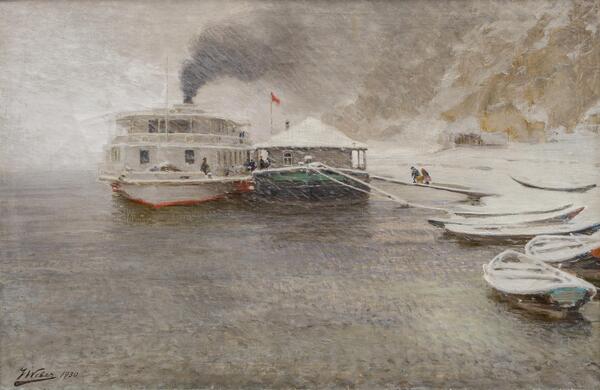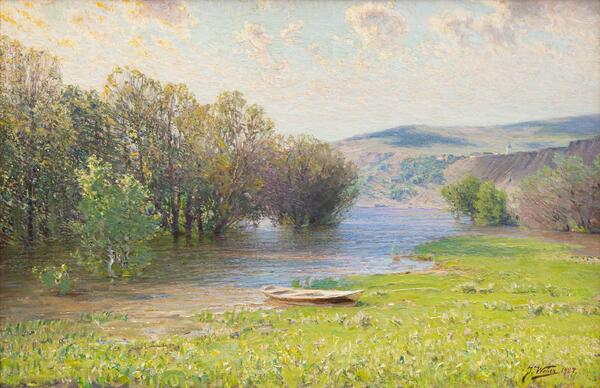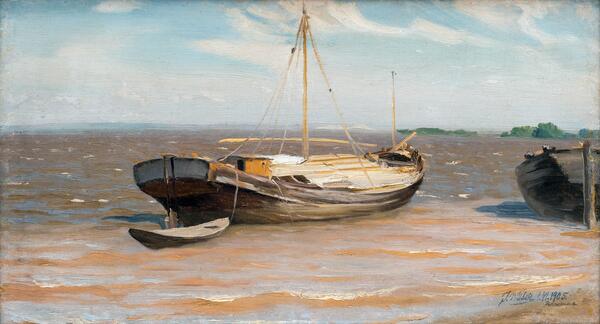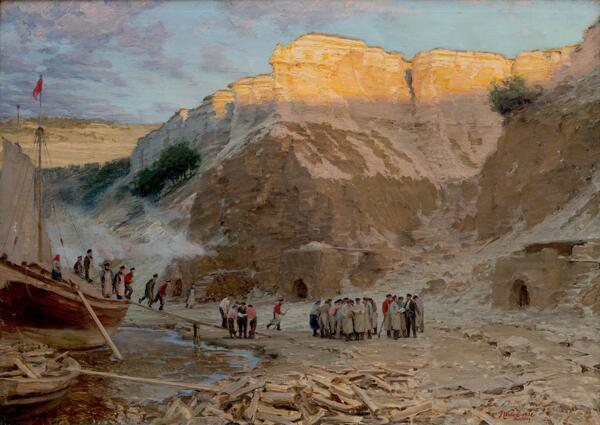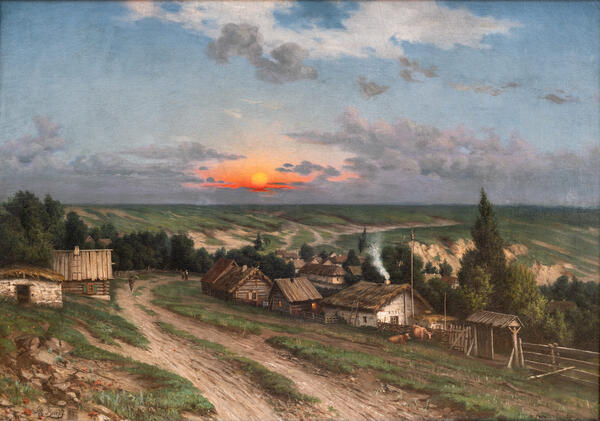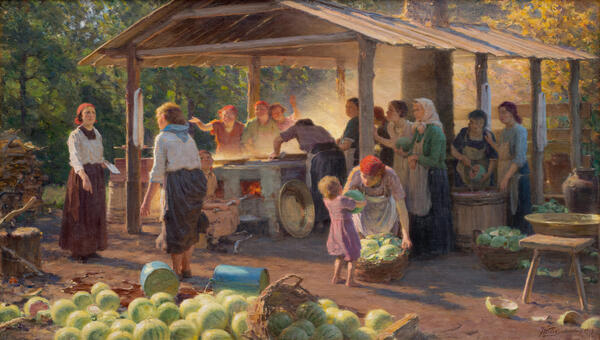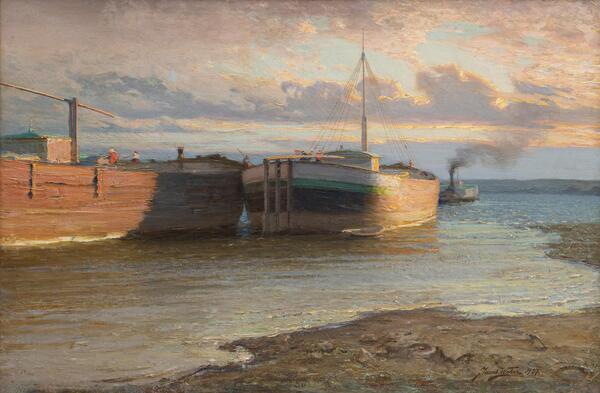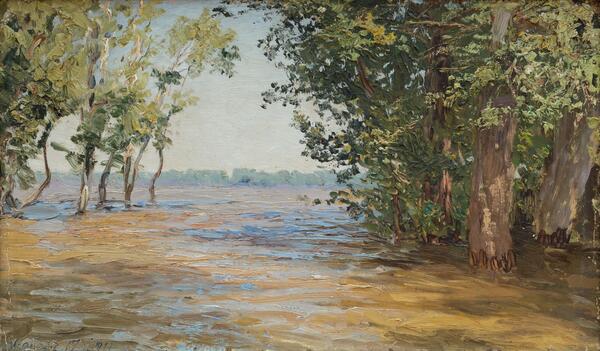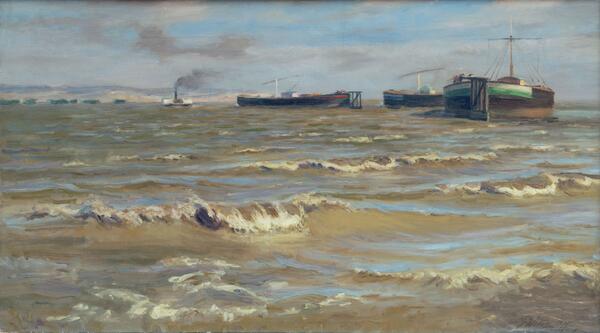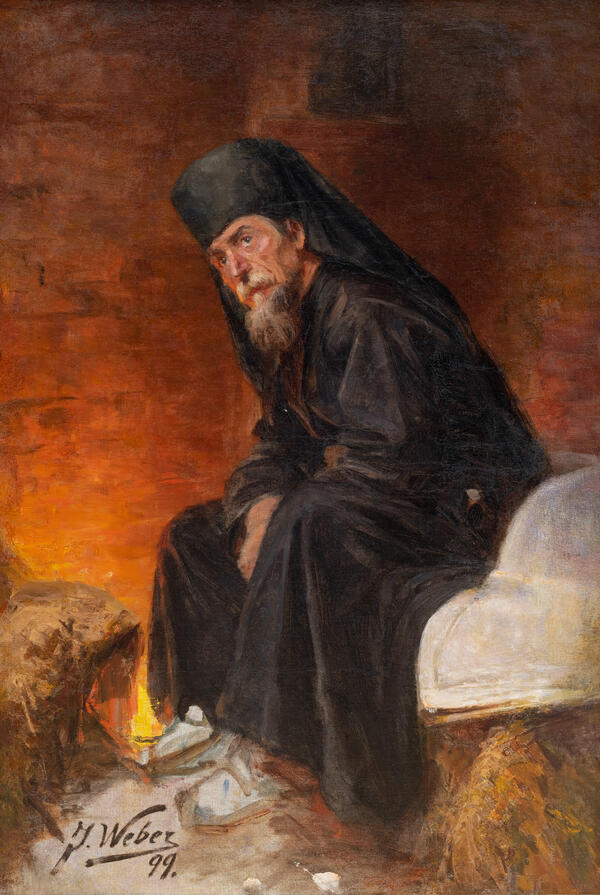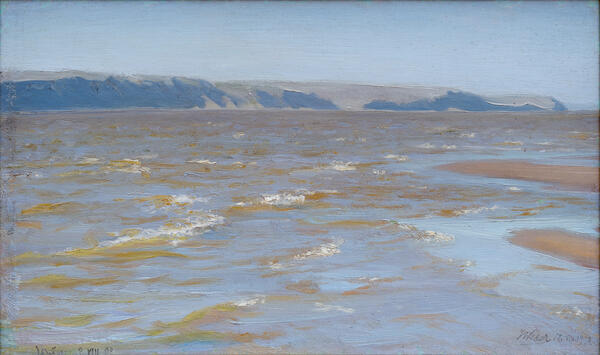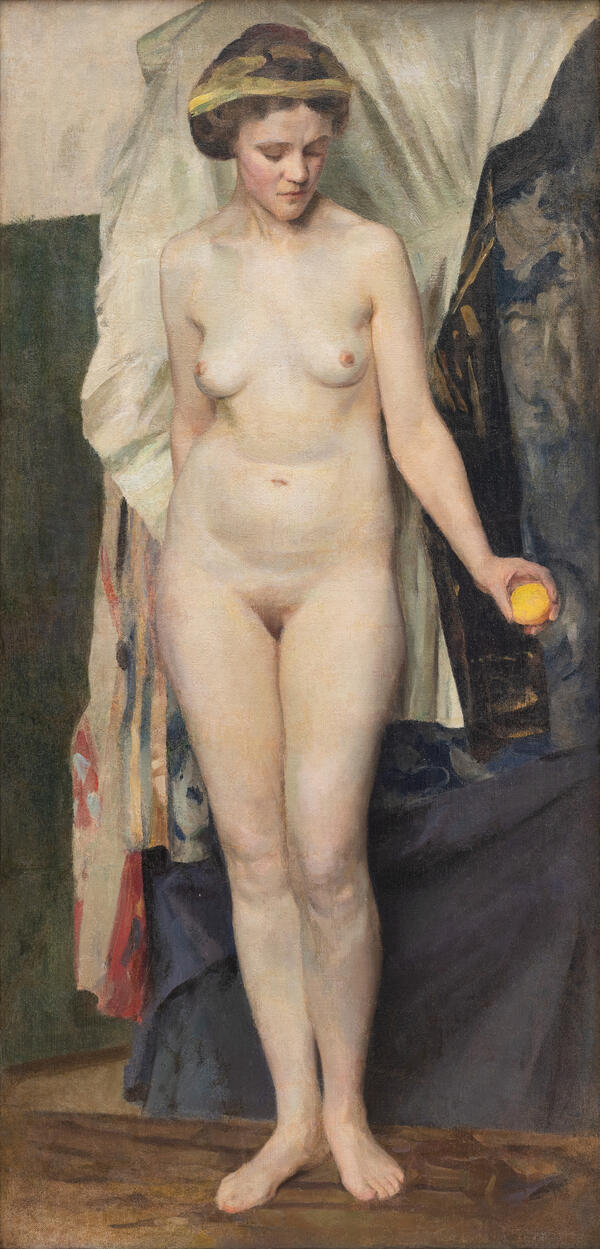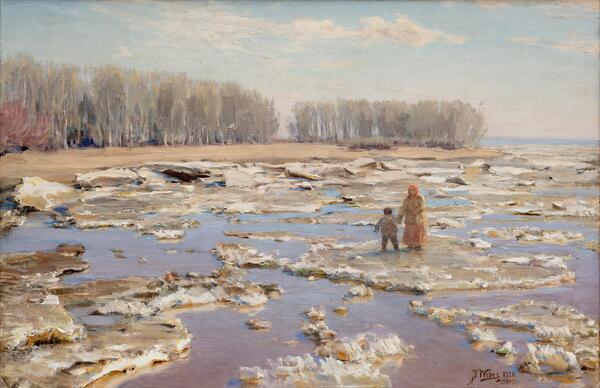Weber’s short, less than a year-long, apprenticeship in the studio of the famous Russian impressionist Konstantin Korovin had an impact on the artist’s work. The painting “Forest Nook” is one of the few works by Yakov Weber, where he used distinctively recognizable impressionist techniques. The composition is fragmentary, the manner is free and textured, the painting is full of fresh, luminous colors. The very texture, the impasto brushstrokes draw the viewer’s attention to the seemingly easy technique of painting and the skillfully chosen palette of colors of the hot summer.
The work was presented at the art exhibition of the Central Museum of the Volga German ASSR, as evidenced by the preserved black-and-white photograph of the exhibition of the Socialist Construction Department’s section “Culture and Life, Painting”. Yakov Weber was an artist of the Autonomous Soviet Socialist Republic of the Volga Germans, who for many years led the realistic movement in the art of young artists of his small motherland. Over those years, the art of Yakov Weber reached a high level of excellence. In November 1934, the artist was one of 50 participants of the First Regional Art Exhibition, which opened in Saratov in the building of the Radishchev Museum, and later he displayed his works there in 1936.
Weber’s work is closely connected with the epoch
and its current themes. For example, the 1930s are notable for large canvases
with genre scenes on everyday subjects. However, landscapes, the Volga River
and its views were the main genre for the artist. Yakov Weber painted the great
Russian river the way it was perceived in the 19th century — as “the main street
of Russia”. Despite all his hardships, Weber remained faithful to the
principles of Russian landscape art of the second half of the 19th century.
Emiliy Arbitman, a historian of Russian art, believed that the special feature
of Weber’s artistic language is the quiet narrative, modest motifs and
traditional media.




